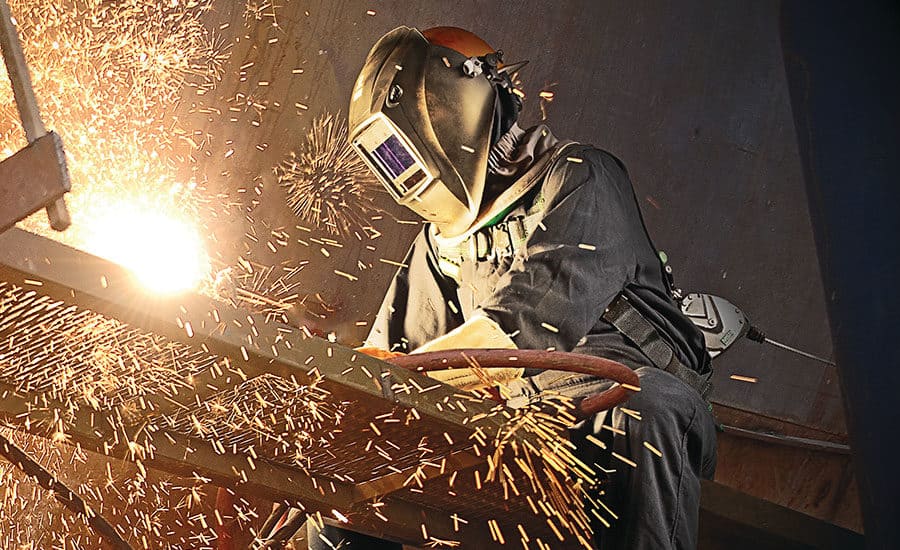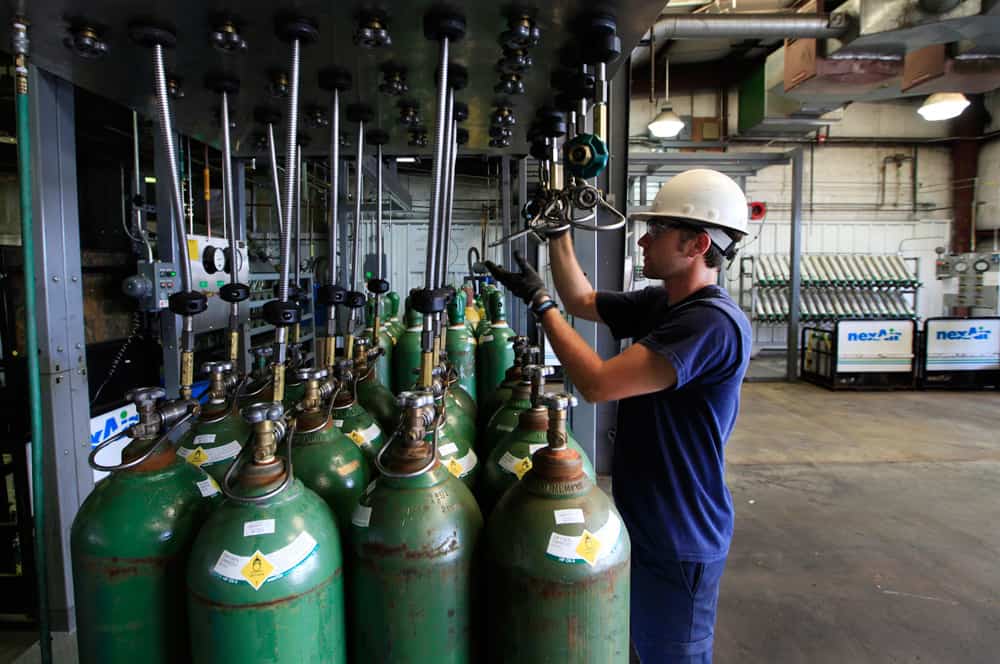The Future of Welding Automation: Industry Trends and Insights from nexAir
Welding automation continues reshaping fabrication across industries. What began as simple fixtures and positioners has evolved into sophisticated robotic systems with machine vision and adaptive control. These changes aren’t merely technological – they’re transforming workforce requirements, shop floor organization, and competitive capabilities across the metal fabrication landscape.
Collaborative Robots Change the Automation Equation
Traditional industrial robots required extensive safety caging, dedicated programming personnel, and substantial floor space. The new generation of collaborative robots (“cobots”) changes these fundamental assumptions.
Cobots integrate safety features that allow them to operate alongside human welders without extensive guarding systems. Force-feedback technology immediately stops movement upon unexpected contact, while speed and torque limitations prevent serious injuries even during direct interactions. These safety innovations reduce both implementation costs and floor space requirements.
Programming interfaces have evolved from complex code to intuitive teach-pendant systems that skilled welders master in days rather than months. This accessibility transforms who can implement automation, making robotics accessible to medium-sized shops previously priced out of the market. With our expert KnowHow™, we regularly help fabricators identify appropriate entry points in automation that match their specific production mix and technical capabilities.
Adaptive Systems Handle Variable Conditions
Traditional automation struggled with part variations and joint inconsistencies. Modern systems employ sophisticated sensing technologies that adapt to real-world manufacturing conditions.
Through-arc seam tracking automatically adjusts torch position based on electrical feedback, compensating for part distortion and fit-up variation. More advanced vision systems identify joint location and characteristics, adjusting welding parameters to maintain consistent quality despite upstream manufacturing variations.
These adaptive capabilities dramatically expand the range of parts suitable for automation. Where previous generations required perfect repeatability, modern systems handle the normal variations present in typical fabrication environments. This flexibility makes automation viable for increasingly smaller batch sizes and more complex assemblies.
Data Integration Powers Process Improvement
Today’s welding automation now includes comprehensive data collection and analysis. This information revolution provides unprecedented visibility into production processes.
Networked welding power sources capture detailed information about every weld – tracking voltage, amperage, wire feed speed, travel rate, and dozens of additional parameters. This data flows into manufacturing execution systems that identify process drift before quality problems develop.
When problems do occur, recorded welding parameters help identify root causes that might remain mysterious in manual operations. Statistical analysis of thousands of welds reveals subtle patterns and relationships invisible to even the most experienced welders, driving continuous improvement initiatives.
Workforce Evolution, Not Replacement
Despite automation advances, skilled welders remain essential to fabrication success. Rather than eliminating jobs, automation changes their nature and increases their impact.
Modern welding technicians combine traditional welding knowledge with automation expertise, working alongside robotic systems rather than being replaced by them. These evolved roles typically command higher wages while reducing physical strain and exposure to welding hazards.
Training programs increasingly incorporate robotics and automation principles alongside traditional welding skills. Fabricators embracing these changes find themselves better positioned to attract younger workers who view technology integration as a benefit rather than a threat.
Economic Accessibility Through New Acquisition Models
Historically, welding automation required substantial capital investment, limiting adoption to larger operations. New financial models are changing this fundamental constraint.
Robotics-as-a-service options provide access to automation with monthly operational costs rather than major capital expenditures. These programs often include programming, maintenance, and updates without additional charges, reducing financial and technical barriers to entry.
Modular automation allows phased implementation, starting with simple applications and expanding as capabilities and requirements evolve. This approach lets fabricators Forge Forward at their own pace rather than facing all-or-nothing automation decisions.
Looking toward future developments in this space? The nexAir team stays connected with leading automation providers, tracking emerging technologies that might benefit our customers. Reach out to discuss how current and upcoming automation options might address your fabrication challenges.
Don't see what you're looking for?
Everything we offer is a click away and it will arrive before you know it.




